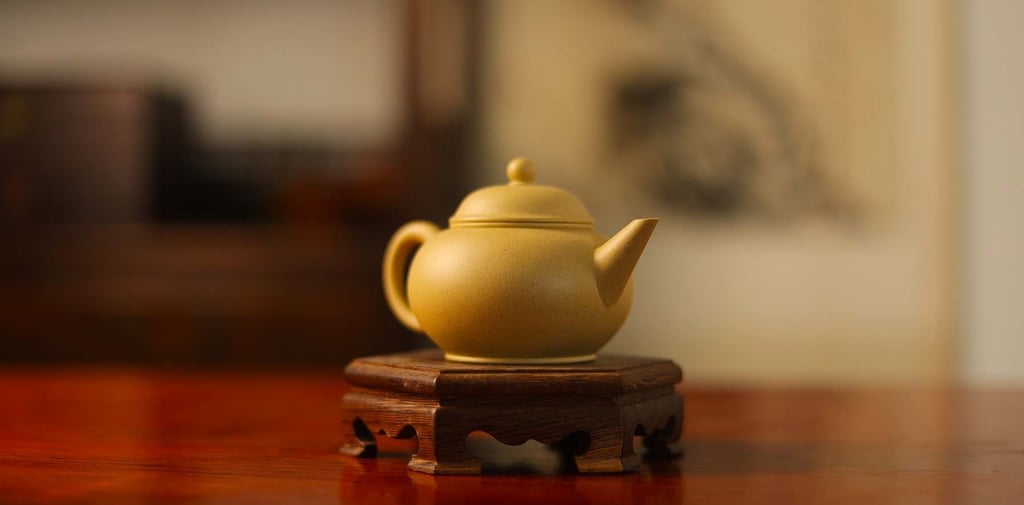How Scholar-Officials Influenced Yixing Teapot
Explore how scholar-officials shaped the development of Yixing teapots, blending artistry, culture, and philosophy to elevate this unique craft. Discover their profound influence on design, aesthetics, and cultural significance.
YIXING TEAPOTS
When you think about Yixing teapots, you’re not just looking at clay pots for brewing tea—you’re holding centuries of culture, art, and philosophy in your hands. But here’s the thing: Yixing teapots didn’t evolve in isolation. Their rich history and refined craftsmanship are deeply tied to a specific group of people—scholar-officials.
So, why did these educated elites care so much about teapots? How did their influence shape the evolution of Yixing teapots into the masterpieces we admire today? Let’s break it down.
Why the Progress of Yixing Teapot is Closely Linked to Scholar-Officials
Scholar-officials weren’t just government bureaucrats; they were intellectuals, artists, and cultural tastemakers. They didn’t just use Yixing teapots—they refined them. Their obsession with art, philosophy, and tea culture directly shaped the design, aesthetics, and cultural significance of Yixing zisha teapots.
Without their involvement, Yixing teapots might have remained simple clay pots instead of iconic cultural symbols.
Scholar-Officials Elevating Teapot Craftsmanship
These guys weren’t passive observers—they actively contributed to teapot design and craftsmanship. Scholar-officials brought their artistic vision and high standards to the workshops of Yixing artisans.
Their input pushed craftsmen to experiment with new shapes, forms, and techniques. As a result, Yixing teapots evolved from basic functional vessels into refined art pieces that blended practicality with elegance.
Their standards set a benchmark: if it wasn’t artistically outstanding, it wasn’t good enough.
Aesthetic Influence of the Literati on Teapot Art
Scholar-officials had a thing for aesthetics. They weren’t just drinking tea—they were cultivating an experience. Their influence led artisans to incorporate design elements inspired by ancient jade, bronze, and even natural landscapes.
The result? Teapots that were not just functional but visually stunning. Each teapot became a canvas—a blend of tradition, innovation, and refined taste.
This evolution wasn’t random; it was guided by the literati’s pursuit of beauty and balance.
Cultural Significance of Teapots and Literati Values
For scholar-officials, a teapot was never just a teapot. It was an extension of their personality, values, and intellect.
They used Yixing teapots as tools for self-expression, engraving philosophical verses, and embedding deeper meanings into their designs. Owning a unique, artistically significant teapot was a statement—a reflection of their sophistication and cultural standing.
These teapots became cultural symbols, merging function and meaning in a way few art forms can.
Literati Gatherings and Teapot Technique Exchange
Scholar-officials didn’t keep their insights to themselves. During the Ming and Qing dynasties, gatherings of these intellectuals became breeding grounds for idea exchange.
Over tea, they’d discuss art, philosophy, and craftsmanship techniques. These conversations weren’t just idle chatter—they shaped the future of Yixing teapot design.
Artisans learned, adapted, and innovated based on the ideas that flowed in these gatherings.
Poetry and Calligraphy in Teapot Design
Here’s where things get really interesting. Scholar-officials loved to combine literature with art. They began inscribing poetry, calligraphy, and philosophical musings directly onto their teapots.
This wasn’t just decoration—it added layers of meaning. Every stroke of calligraphy told a story. Every verse captured an emotion or idea.
This practice elevated Yixing teapots to a whole new level of artistic significance, blurring the line between utility and fine art.
Impact of Scholar-Officials' Decline on Teapot Craft
But here’s the sad part: when the scholar-official class began to decline, so did their influence on Yixing teapot craftsmanship.
Without their artistic vision, philosophical depth, and cultural leadership, the craft lost some of its soul. Innovation slowed, and much of the cultural richness they brought to the art began to fade.
Today, the legacy of scholar-officials remains, but the challenge lies in keeping their spirit alive in modern Yixing teapot design.
Conclusion
The story of Yixing teapots is inseparable from the story of scholar-officials. Their influence went beyond aesthetics—they shaped how these teapots were made, how they looked, and even how they were perceived culturally.
From design innovation and artistic standards to poetry inscriptions and cultural symbolism, scholar-officials didn’t just participate in the evolution of Yixing teapots—they drove it.
If we want to preserve the legacy of this revered art form, we need to honour and remember the role these cultured individuals played in shaping it. Because without them, a Yixing teapot is just clay—but with their influence, it’s art.
FAQs
Q: Why are Yixing teapots so highly valued?
A: Yixing teapots are valued for their unique clay, craftsmanship, and deep cultural significance shaped largely by scholar-officials.
Q: How did scholar-officials influence Yixing teapot design?
A: They brought artistic vision, philosophical depth, and high standards, pushing craftsmen to innovate and refine their work.
Q: Why did scholar-officials inscribe poetry on Yixing teapots?
A: Poetry and calligraphy added layers of meaning, turning teapots into storytelling canvases.
Q: What happened to Yixing teapot craftsmanship after scholar-officials declined?
A: The decline led to a loss of cultural depth and slower innovation in teapot design.
Yixing teapots aren’t just brewing tools—they’re cultural treasures. And without the scholar-officials, they wouldn’t be what they are today.




